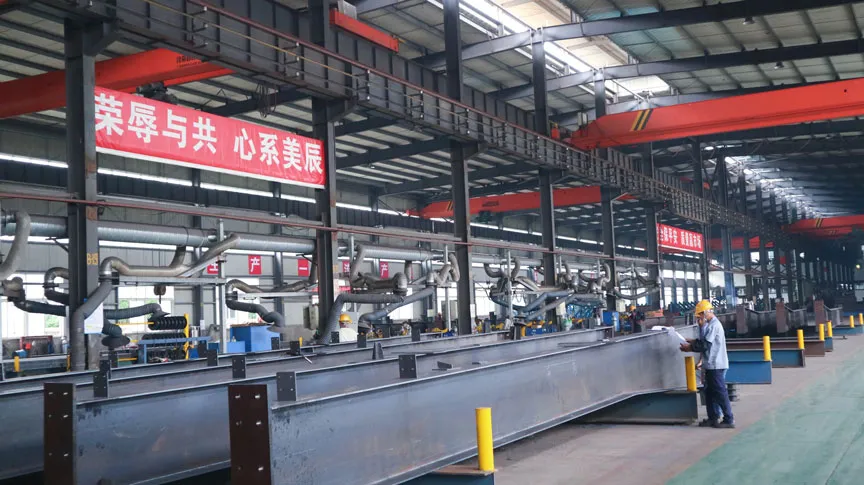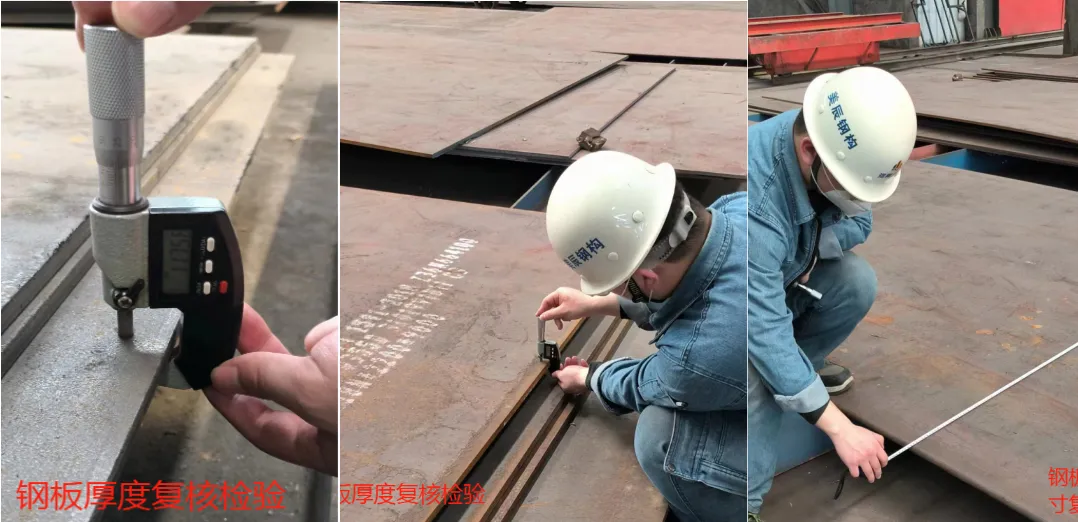Time:2025-10-17 03:12:37 Source:Sanjian Meichen Steel Structure
When importing steel structures from China, ensuring the quality of the products is critical to avoid costly delays, defects, or safety issues. China is home to numerous steel manufacturers, and while many offer competitive prices, not all suppliers maintain high-quality standards. As an experienced importer or procurement manager, here are key steps to take to guarantee the steel structures meet your required quality standards.
Supplier Certification is an essential indicator of a supplier's capability to deliver quality products that meet both local and international standards. When assessing a Chinese supplier, ensure they have the following certifications:
ISO 9001: This is the most recognized international standard for quality management systems (QMS). A supplier with ISO 9001 certification has demonstrated the ability to consistently meet customer requirements and improve quality.
CE Certification: If you're in Europe or your product needs to comply with European standards, look for suppliers that are CE-certified, which indicates conformity with health, safety, and environmental protection standards.
ASTM or EN Standards: For markets in North America and Europe, ensuring your supplier follows ASTM (American Society for Testing and Materials) or EN (European Norm) standards is vital, especially for structural steel products.
Ask the supplier for a copy of their certifications and verify their authenticity through the issuing bodies or third-party platforms like SGS or TUV.

Before the steel structures are shipped, it’s critical to conduct thorough inspections to ensure they meet the required specifications. Here are the key practices to follow:
Pre-Shipment Inspection (PSI): Engage an independent third-party inspection company to perform a PSI. This inspection should include verifying the steel’s grade, dimensions, coating quality, and welding integrity.
Dimensional Verification: Ensure the steel beams, columns, and other components match the engineering drawings and specifications, especially for custom projects. Measure key parameters such as length, width, and weight.
Welding and Coating Quality: Inspect welds and coatings to ensure they comply with industry standards. Pay close attention to the welds around high-stress areas like joints, and ensure the anti-corrosion coating is applied uniformly.
Certification of Materials: Ensure the materials used are certified for quality and compliance with the specified steel grades. Request mill certificates and material test reports to verify the chemical composition and mechanical properties.
Load Testing: If applicable, verify that load testing (especially for load-bearing components) has been conducted according to international standards, such as ISO 13918.
To ensure quality throughout production, assess the supplier's internal quality control (QC) processes. These should include:
In-House Quality Control: Review the supplier’s quality assurance protocols, such as product inspections, sampling procedures, and testing methods during the production process.
Experience with International Standards: The supplier should demonstrate familiarity with international quality standards relevant to steel structures. Ask about their experience in handling projects for international clients and how they comply with quality certifications like ISO and ASTM.
Material Traceability: Ensure the supplier can provide full traceability of the materials used in manufacturing. This ensures that, in case of defects or failure, you can trace the issue back to the source of the raw material.
Third-Party Inspections: Confirm if the supplier allows third-party inspections and audits during the manufacturing process. Regular inspections ensure consistent product quality throughout production.

Ensuring that your steel structures meet international standards is crucial to guarantee they’re safe, durable, and legally compliant. Here’s how you can do that:
Compliance with International Codes: Make sure the steel structures meet the applicable international building codes such as:
ISO Standards for steel structure design and fabrication.
ASTM Standards for materials and construction processes.
EN 1090 for structural steel and aluminum execution.
Material Compliance: Verify that the steel grades meet the required international standards (e.g., ASTM A36, EN 10025). Ask the supplier to provide material certificates and test reports for chemical composition and mechanical properties.
Testing and Inspections: Ensure that the steel structures undergo thorough testing, such as tensile testing, impact testing, and non-destructive testing (NDT) methods like ultrasonic or magnetic particle testing. Third-party inspection companies can provide these services to confirm compliance with international standards.
On-Site Inspection for Fitment: Conduct on-site inspections to ensure that the steel structure fits perfectly with the design and the requirements for load-bearing capacity, safety, and durability. This can be done by comparing the design model with actual construction measurements.
Importing steel structures can sometimes face delays due to manufacturing issues, shipping delays, or unforeseen complications during customs clearance. To minimize these risks, consider the following:

Clear Contract Terms and Deadlines: Ensure the supplier is aware of your deadlines and includes specific timelines for production, inspection, and delivery in the contract. Use penalty clauses for any delays beyond the agreed-upon shipping date.
Pre-Shipping Documentation: Work closely with the supplier to ensure all documentation (e.g., certificates, invoices, packing lists) is prepared well in advance. Incorrect or missing documentation can cause delays during customs clearance.
Shipping and Customs Coordination: Choose a reliable logistics partner experienced with shipping steel structures. It’s crucial to have clear communication between the supplier, your logistics partner, and customs agents to avoid customs-related delays.
Buffer Time in Scheduling: Always allow extra time for unexpected delays in production, shipping, or customs clearance. Buffer time ensures that even if there are setbacks, your project won't be significantly delayed.
Track Shipment Progress: Use shipment tracking systems to stay updated on the status of your steel delivery, ensuring there are no surprises along the way. Keep open lines of communication with the supplier and freight forwarder.
When importing steel structures from China, the key to ensuring quality lies in the careful selection of suppliers, thorough inspection practices, and ensuring compliance with international standards. By verifying certifications, evaluating the supplier’s quality control processes, and performing pre-shipment inspections, you can significantly reduce the risk of receiving subpar materials. Additionally, planning for potential delays and incorporating buffer time into your project schedule can help keep everything on track. By following these steps, you’ll be better positioned to import high-quality steel structures that meet your specifications and perform reliably for years to come.